Jean Matulnes Lamy: Haiti’s ‘Peasants Built Ile a Vache!’ – Part I
Editorial Comment
Below is the transcript of an interview of Mr. Jean Matulnes Lamy, the Vice President of the Organization of Ile a Vache Farmers (Konbit Peyizan Ilavach, or KOPI), with Radio VKI on January 17, 2014. Mr. Lamy is imprisoned in Port-au-Prince’s infamous National Petinentiary, where he was taken without charge or trial on February 25, 2014. Although the Haitian government has made various unofficial accusations against him, his wife reports that none of these charges were mentioned to him when he was twice called in for questioning, and that instead he was warned that, as a policeman (he was one of two on the island), he should not participate in any protests or even return to the island. Apparently he returned to Ile a Vache for this important interview.
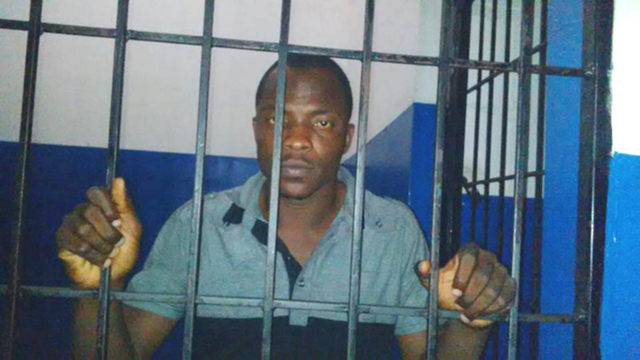 The interview immediately followed a visit by Haitian Tourism Minister Stephanie Balmir Villedrouin, who had failed to explain to KOPI the details of construction projects that clearly had already started on the island. Subsequently, a series of actions by the island’s residents have paralyzed all business activity and construction, including one on Wednesday, April 2, 2014 that blocked all construction by the Dominican-Republic based company Ingenieria Estrella S.A. The residents demand the:
The interview immediately followed a visit by Haitian Tourism Minister Stephanie Balmir Villedrouin, who had failed to explain to KOPI the details of construction projects that clearly had already started on the island. Subsequently, a series of actions by the island’s residents have paralyzed all business activity and construction, including one on Wednesday, April 2, 2014 that blocked all construction by the Dominican-Republic based company Ingenieria Estrella S.A. The residents demand the:
- Recall of a government decree to declare the island a zone of tourism development and public utility,
- Release of Mr. Jean Matulnes Lamy,
- Withdrawal of 115 militarized police from the island.
The interview of Mr. Jean Matulnes Lami, together with Mr. Louis Jean Gadi, both KOPI members, was with Mr. Sonny Esteus of Radio VKI (Radyo Vwa Kominote Ilavach). It was rebroadcast on March 10, 2014. In this part of the interview, Lamy and Gadi discuss the history of land ownership and beautification at Ile a Vache, the protests, and the issues that currently trouble the islanders, including their exclusion from the development decisions.
Dady Chery, Editor
Haiti Chery
Translated from the Kreyol and edited by Dady Chery for Haiti Chery
Introduction
Sonny Esteus – Well, sirs, to start: what is happening on Ile a Vache today as we speak?
Jean Matulnes Lamy – Well, we can say that today the time finally came for the Ile a Vache population to see things clearly with regard to several pieces of information that have been circulating about the government’s tourism development. The population is beginning to realize that it was not included from the start, and today, work is starting. The execution of the project has started, with plenty of abuse.
SE – Louis Jean Gadi, did you see the documents for this project? What’s in this project?
Louis Jean Gadi – Based on what I’ve seen from the Tourism Minister, she’d have us believe that there’s a project to build 1,000 hotel rooms and 2,500 villas, plus an agricultural area with agricultural infrastructure. I understand that Ile a Vache has an area of [50] square kilometers. Is this project to be done on [50] square kilometers of Ile a Vache? Where will the population go? It’s all this worry that hangs over the population. Here’s why the people don’t agree to this project. The population has been living here more than a century. And now, for a project to come and throw away all the people like this, not take their needs into account. Well, then, this is what has pushed the residents to protest against this project.
SE – Jean Matulnes, what happened? Hotels, villas, agricultural infrastructure? Well, it’s development, isn’t it? I assume you’ve asked for development of the island?
JML – Yes, it’s a dream of ours. Not only a dream, but one that would be great if we could succeed in seeing Ile a Vache become part of a worldwide tourist destination, or the most beautiful tourist destination in the Caribbean.
History of Ile a Vache
SE – Currently they say Abaka Bay is the 57th most beautiful beach in the world?
JML – Yes, I think that’s what they say. On one hand, this makes us proud, but on the other hand, what use is it? What’s the use of a cooking pot that is done cooking and then tossed out with the towel while the food is carried off. What do I mean by this? Today, all eyes are on Ile a Vache because of its green cover. Its vegetation is really beautiful. Mr. Sonny, you were on Ile a Vache, you saw that the vegetation cover was pretty good. Well, a group of people are coming from who knows where and saying they’re doing development. But they never ask themselves the question: these woods, who planted them on Ile a Vache? Was this always around on the island?
Let’s go more deeply into the history of Ile a Vache’s green cover. Ile a Vache is an island that really began to be occupied by people starting around 1930. People came here from different places. They left Saint Louis, Saint Jean, Tobec and La Trille. Why? Some came to work the land, because the land was uncultivated back then; others came to fish. Indeed, in the past, when somebody died on Ile a Vache, he was not buried there. They took his body always to Saint Jean du Sud, or Saint Louis, wherever he came from.
Around 1930, Senator Louis Desjoies comes to Ile a Vache and gets 2500 acres [800 carreaux] of land. He goes to the state and rents it from the state. He starts to plant lemongrass, lemons, millet, corn, and other agricultural crops on the island. It’s then that people begin to move to the island in large numbers. Desjoies not only pays them to plant stuff, but also gives them other small benefits. Well, even up to this point people don’t feel secure. They say: “The land is Desjoies’ land, not ours.” We have to wait until 1940, when Father Robert Magron comes and builds the first city center on Ile a Vache, in La Hatte, today nicknamed Grand Cayes. It’s there that the first Catholic Church gets built. Now Father Robert Magron starts a migration, and people start to come, and Ile a Vache becomes a district of Aux Cayes.
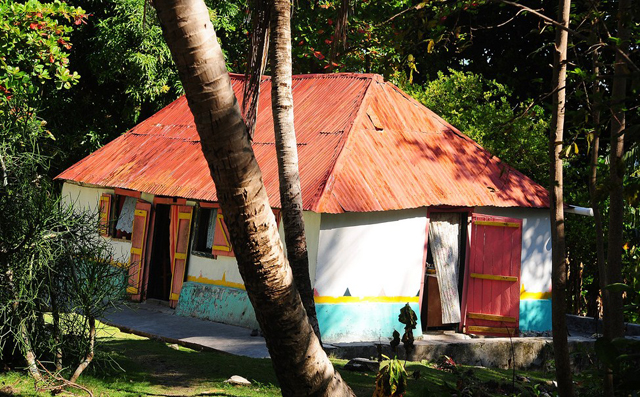 SE – People effectively come to Ile a Vache to stay?
SE – People effectively come to Ile a Vache to stay?
JML – People begin to come to live on Ile a Vache starting around this period. The first institution is a Catholic church. Well, you find, in 1957, with Francois Duvalier, one day, big trouble between him and Desjoies. Desjoies cannot hang on, and he gives up his place. Francois Duvalier leads a tough administration with dictatorial powers. He gives the Ile a Vache population the 2,500 acres from Desjoies. He takes 1,250 acres from this to give as grants to the population: as rural grants. For example, Jean Gadi Louis and me here, our fathers own lands from these rural grants. After this, 1,250 acres are still left. People are caring for these. And Ile a Vache doesn’t have only 2,500 acres of land. There’s much more land. Well, people continued to care for this.
The same government goes on to grant farming rights to people. Now Ile a Vache has three categories of land: one category is rural grants, another is farming rights, and another is people who have other land leases still in hand and who continue to cultivate. You find, starting from this point, that the Ile a Vache population plants the land with confidence. They come to feel that they own it. You see the many coconut trees and mango trees on Ile a Vache? Only two areas used to have coconut trees: Kay Kok and Trou Dlo.
I am talking now to people who know La Hatte: when you stood in Grand Cayes, the place where I said the first Catholic church was, back then you could see people fishing way down there. What I mean by this is: there were no trees. The island was not forested. Well, beginning in [the 1950s], in the places where the population got farming rights and rural grants, where they became owners, they started to plant. They came from everywhere with their plants, especially Saint Jean du Sud. This is one of the reasons why today, when you look at Ile a Vache’s vegetation cover, it’s the same as in Saint Jean du Sud. The majority of the Ile a Vache population were people who left Saint Jean du Sud with Father Robert Magron, who was a priest there. So, the vegetation cover that’s been achieved today, that has allowed Ile a Vache to catch the eyes of the world: it’s the peasants who made it. It’s the peasants who built Ile a Vache!
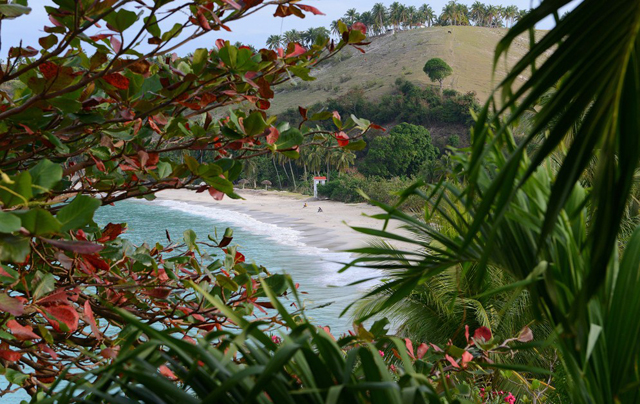 SE – But still they say all the islands are state lands?
SE – But still they say all the islands are state lands?
LJG – [They say] all the islands are state lands, as Maltunes said. He said the government gave out grants, etc. My father has one, his father has one, all our parents have them. You see? Grants from the government to the population. And the people built this together with other folks who got farming rights from the government. These people who built this, who created all this beauty, they’re here today on Ile a Vache. How do you treat this population that has achieved this? As Maltunes said: like a pot that is done cooking. You take the food and you toss away the pot with the towel.
SE – I remember when I first met you on Ile a Vache, you used to complain that there are no roads, because even bicycles could not circulate there; people had to go on a donkey, horse, mule, or on foot. Well, but I see roads being built, and so on. What gives? Don’t you want this progress?
JML – We don’t want people to think that KOPI is protesting on Ile a Vache because we don’t want development. We want development, but we say that this development must be defined. We should be in it. For example, Mr. Sonny, after two protests on the island, KOPI gave a one-week deadline to the local authorities to give us a response. As part of this response, they asked the Tourism Minister to come to Ile a Vache.
Destruction of mangroves for ecotourism
SE – What answer did you expect [from the tourism ministry]?
JML – We expected them to explain the project that was already under way and that we knew nothing about. This is why we rose up: all the work being done. Because, consider the roads. It’s true that roads were being constructed. But the roads are being built without any plan for compensation. The airport is getting built without any plan for compensation. I feel that they took no account of the possible ecological impact. I remember in the first emission you did here, if you recall, while I was listening to that emission, how the man was saying that the mangroves function as a shield. But now they destroyed the mangroves, you see.
SE – Meaning, they deforested it.
JML – They deforested it. And many farmers have their farms on limestone. These folk went into those farms to quarry away the rocks. They wrecked the farms and they didn’t give a cent to the farmers. They gave the farmers nothing.
SE – I do remember the first broadcast I did with the young. Like you said: the mangroves on the east serve as a shield. They explained how, when there’s a hurricane, it’s the mangroves that protect the island against the strong winds from the east.
LJG – Let me say something more about this development business. It isn’t that we don’t really want development. The population must be integrated in the development being done. If you are doing a development, you should take into account all the impact on the population. If you come to an area and you say you’re doing development, and you expel the people from the area. You’re doing this development for whose profit? This is it! This is a big problem today. You see? You cannot do a development and say: “We’re developing Ile a Vache.” You say you will develop an area. You specify the area that you will develop! And then the people allow it so their lives can improve.
SE – So for you, development must consider people first?
LJG – People first.
JML – People first.
Disregard for lifestyles and traditions
SE – You were talking about the [Tourism Minister’s] response.
JML – The interim governor arranged for Minister Stephanie Balmir Villedrouin to come last Friday January 10. When she came, she confirmed that there’s no place for us here. Because, imagine this: she told us that one third of the land will be for hotels, one third for restaurants and casinos, and one third for agriculture.
SE – And the homes for everyone? Maybe they’ll be in the agricultural area. No?
JML – No. Anyone who could do the math quickly understood that we would not be in it. Secondly, when we realized that Mrs. Villedrouin said that she is taking over 12 beaches. For those who know the island, she said those 12 beaches would start from Grand Sable. From there, you follow the west coast for the 12 beaches and go south, all the way to Skannot. What troubles us about this issue is that they don’t respect our traditions. For example, not everybody knows Ile a Vache’s major holiday, but for Ile a Vache people, the patronal holiday is “Recif Careme.” Since we were children, it’s the Recif that’s been celebrated. Our holiday is “Recif Careme.” They’ve taken over that beach. It’s as if none of our rights is to be respected.
SE – Recif Careme is a beach?
JML – It is a beach. It’s there that, at Careme time, the entire Ile a Vache population goes for three to four days to celebrate Careme. Therefore, we told this to Mrs. Villedrouin, because when we asked her to come, she did come. She did not come with a written document; she came with only a map.
SE – It was an oral presentation.
JML – An ordinary oral presentation. She came with a map and simply presented us with the places that are taken. We quickly understood that we: we are not in it.
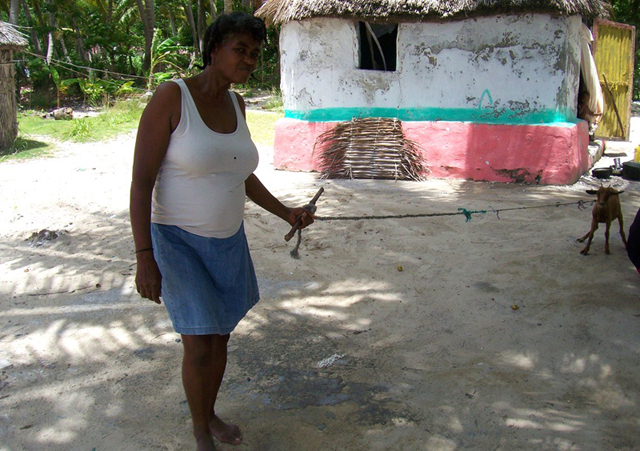 SE – Did you ask the question: and the people, where will they be put? Those who already live on the island?
SE – Did you ask the question: and the people, where will they be put? Those who already live on the island?
JML – Nowadays, they don’t talk about “displacement,” they say “relocation” and let it be understood that they will put the people in three places. And when you’re going to put people in three places, the population, we wonder about this. Even if you see us living on the island, one knowing the other, we do not have the same lifestyles. For example, you cannot take someone from the east and put him to live with someone from Betelmi, in Gros Morne. They won’t live well together.
LJG – Also, the population isn’t used to living likes this: I mean in cities, in crowds, in a series of things stacked on top of each other. People like their backyards, big yards where they keep their chickens, their goats and a whole bunch of stuff. But when you say you’ll crowd this population into a tiny city, in shelters, stuff like that, this is already exasperating. You see? Do you see how frustrating this is? It’s all this stuff that’s made the people so anxious. This population, everybody is tense. Imagine yourself at 70 or 74 years old. My father is 74. How can you tell someone who’s worked all his life to move to the city because these lands, they are needed for hotels. You see. This is not normal. This is why KOPI took up the torch to say no, to enlighten the population and have them say no, this cannot happen.
Community center, radio station and water wells, for whom?
SE – A tourism project where they will build hotels, casinos, agricultural infrastructure. But the population says it doesn’t see where it will fit in this project. Where will the people live? And this is the greatest worry of people who’ve been on the land for several decades. They worry about this project that’s already started, but with nothing said to the people who’ll be displaced about their compensation. Besides, there are already examples that worry people, with the road that has been torn through a place with many coconut trees, many mango trees that have lost their lives, and there are people’s lands they took from both sides of the road, and these people haven’t been compensated. They continue to demand compensation. And the people who’ll be displaced by the airport, etc., they worry that they won’t be compensated. Well, we know that the people took to the streets. Jean Maltunes and Louis Jean Gadi, are two leaders of KOPI (Konbit Peyizan Ilavach) who are here with us today. The Tourism Minister, who herself says that she is “the drive behind the Ile a Vache project,” she was in the area last Friday. And we learned that there was a chase. Is it then that there was this chase. The people chased after the authorities?
JML – Yes, it was right then, because this happened Thursday. The chase was not on Friday but on Thursday, when Minister Balmir tried to address the population in the public square. Thursday is market day on Ile a Vache. The people spoke, not only with Minister Balmir but also with interim governor Fritz Cesar. There were questions about 1,000 gourdes [$22] he took from people. The people were out in the sun, and they took the opportunity to bring up this problem with them.
SE – One thousand gourdes for what?
JML – He said the 1,000 gourdes [$22] are being taken from people as a deposit so they can put their goods in the market. People have still not seen where the deposit went. So they took the opportunity to bring up this issue with the interim governor. We must say that Thursday afternoon, the Secretary of State for Vegetable Production, Mr. Docent, also got a hard time from the Ile a Vache population, especially in La Hatte.
Well, along with the interim governor, these people got a hard time, along with Fernand Sajous who owns the Abaka Bay hotel. Well, these men got a hard time. Around 6:30 in the evening, they tried to meet with the people from KOPI. KOPI did not want to meet with them. But in the end, the KOPI people decided to meet them, but with the notary from the area. Well, this business ended badly because the Secretary of State stood up and said “All the land is state land. Ile a Vache is state land.” The population got mad as hell. And it’s lucky that the Secretary of State managed to leave Ile a Vache safe and sound.
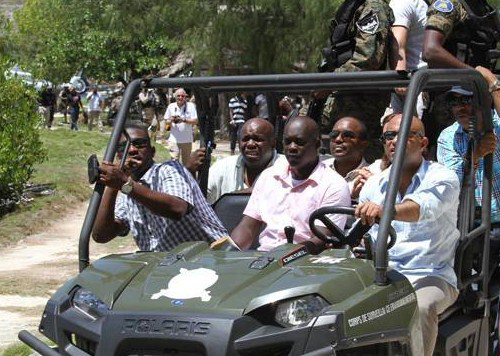 We must also tell you about the meeting that took place with Minister Balmir. The population, especially KOPI, told the Minister that she did not convince us. And naturally, we asked her to return. And she promised the population that she would return to bring us the documents. Yesterday, which was Thursday January 16, Mrs. Balmir came to the other side this time with a bigger delegation. There was a representative of DGI from Aux Cayes; the Departmental Delegate was there. In short, the meeting took place. While the meeting was going on, the population was on its feet and chanting “Ile a Vache is not for sale, not in bulk, not in retail,” and KOPI was inside. We asked her to give us the document. Unfortunately again, Mrs. Balmir [and her group], instead of giving us the document about the project, well, they talked about what they had done. For example, they said they built a community center. That’s what I’m saying: a community center. If it was for Ile a Vache people, it would be in the center of the island.
We must also tell you about the meeting that took place with Minister Balmir. The population, especially KOPI, told the Minister that she did not convince us. And naturally, we asked her to return. And she promised the population that she would return to bring us the documents. Yesterday, which was Thursday January 16, Mrs. Balmir came to the other side this time with a bigger delegation. There was a representative of DGI from Aux Cayes; the Departmental Delegate was there. In short, the meeting took place. While the meeting was going on, the population was on its feet and chanting “Ile a Vache is not for sale, not in bulk, not in retail,” and KOPI was inside. We asked her to give us the document. Unfortunately again, Mrs. Balmir [and her group], instead of giving us the document about the project, well, they talked about what they had done. For example, they said they built a community center. That’s what I’m saying: a community center. If it was for Ile a Vache people, it would be in the center of the island.
Mr. Sonny, you’ve been to Ile a Vache. A community center in Kay Kok with a library. Is this for the population? When we think about the people on the west. The Madame Bernard people: the population is better off going to Aux Cayes to go the library, instead of going down to Kay Kok. They have a radio called Vwal FM. It’s well named, because beneath a veil, anything goes. Well, this radio that’s broadcasting, no one on the island knows where it is. In other words, is this radio serving the community? No! It’s all these things: the meetings that took place, the authorities who spoke. The governor spoke one language, the secretary of state spoke another, and Minister Balmir spoke yet another. We are not clear about what is going on. We don’t know whom to believe. Today, the fight took a turn. It took a turn! We say: this kind of project, we do not want it. If they really want to develop Ile a Vache, they must revise it. They must revise this project. They’ve published a decree; this decree must be repealed.
SE – What does the decree say?
JML – The decree declared that all of Ile a Vache is a zone reserved for tourism development. We do not see a place for the population in this. They went even further and declared a maritime limit too.
LJG – And there’s something more. The project must take into account the problems of Ile a Vache. We live in this place. As you say, you’ve been to Ile a Vache. You see that there’s no potable water. You see that it lacks a lot of basic infrastructure. How are you going to do a project here? You say you’re going to do a project. And there’s no drinking water. In other words, people are living in a very difficult situation. I don’t see the value of this project.
JML – Something you left out, Jean Gadi. For example, they’re promoting the fact that, as part of this project, they’ll dig eight water wells. But today, if you go to Kay Kok, you’ll see that they dug only one well in Kay Kok, and it’s not for the Kay Kok population: it’s for Fernand Sajous, who keeps it for his hotel [Abaka Bay Resort].
LJG – And the Kay Kok population isn’t all Ile a Vache’s population. Ile a Vache has 26 neighborhoods: all 26 should benefit from these things.
Sources: Haiti Chery | Radio VKI | Protest photos from Radyo VKM

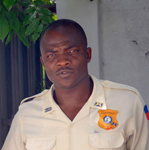
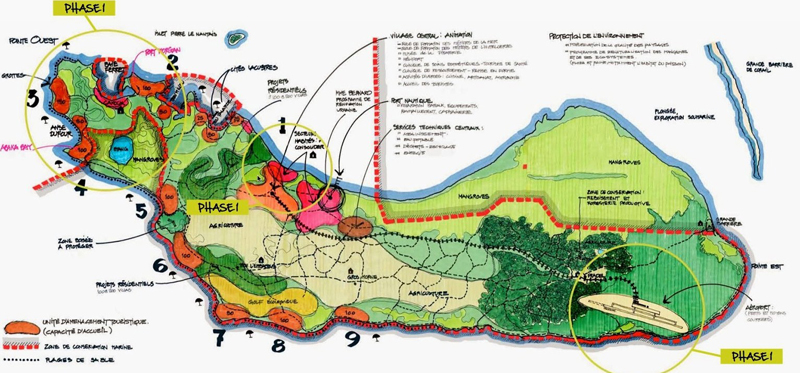
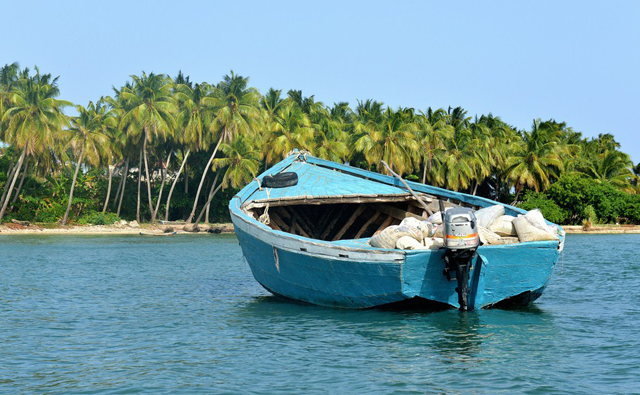
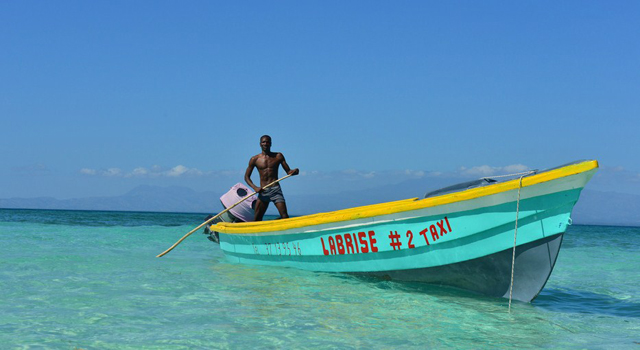
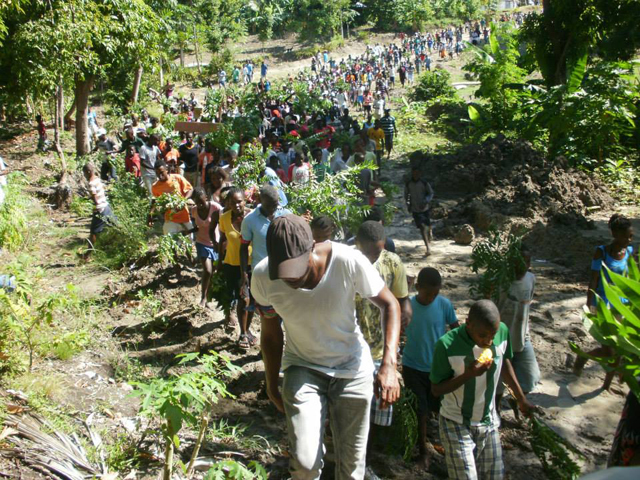
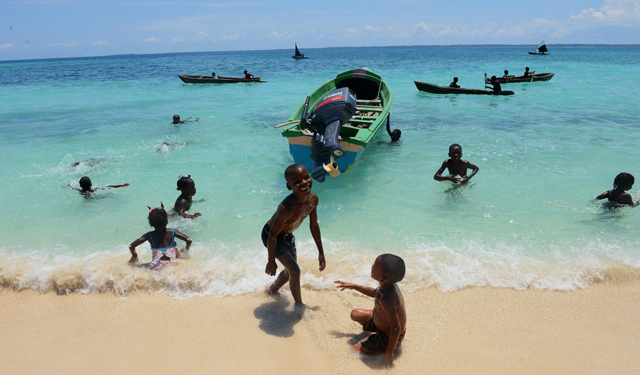
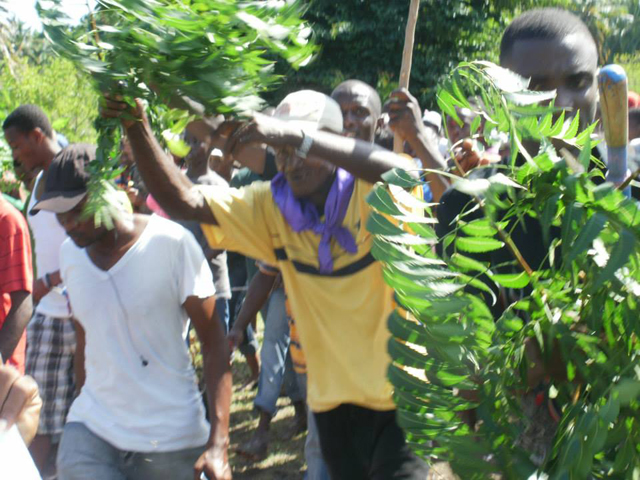
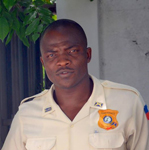
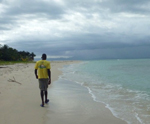
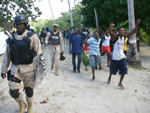



Comments
Jean Matulnes Lamy: Haiti’s ‘Peasants Built Ile a Vache!’ – Part I — No Comments